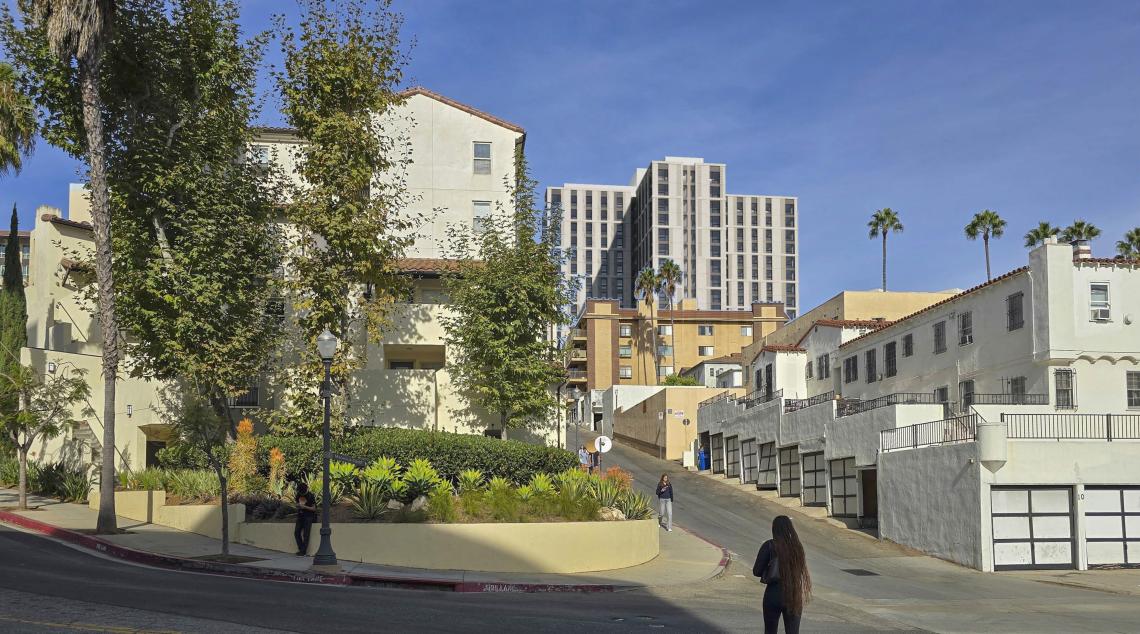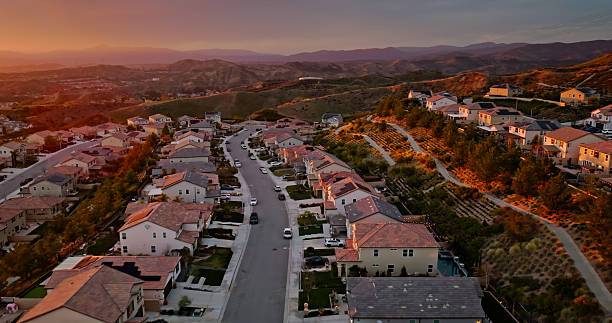Los Angeles has seen major shifts in residential permitting over the last few years. Two laws pushed most of this change: SB 9 and the state’s updated Accessory Dwelling Unit (ADU) rules.
Table of Contents
ToggleBoth laws aim to create more homes on the same land. That sounds simple, but it brought a real change in how homeowners, designers, and contractors deal with permits in LA.
For many people, the process now feels more direct. There are fewer judgment calls and more “yes or no” rules. Still, the details can be confusing. Each property in LA has its own layers of zoning, overlays, and maps. That affects what you can or cannot build.
This article breaks down how SB 9 and ADU regulations changed residential permitting in Los Angeles in clear language. It also explains what these laws allow, what LA accepts, and how these changes affect your project planning today.
What Are SB 9 and ADU Laws? (A Simple Primer)
SB 9 and the state’s strengthened ADU laws changed California housing rules in a major way. But you don’t need a legal background to understand them. Below is a simple overview that covers the basics without the jargon.
What SB 9 Allows Homeowners to Do
SB 9 is a statewide law. It gives many single-family homeowners two main options:
Build a duplex on a single-family lot.
Split the lot into two separate parcels, then build up to two homes on each.
These approvals are ministerial. That means the city must issue them if your project meets all objective rules. There is no hearing, no neighbor vote, and no board review.
That sounds bold, but the law also sets clear limits. Los Angeles follows the state standards and adds its own objective rules.
Here are the core requirements, written in plain language:
The property must sit in a zone that allows single-family homes.
The site cannot be in certain protected areas, such as some historic zones or fire-risk areas.
Urban lot splits usually require the owner to live on one of the parcels for a set period.
Each lot created by a split must meet size and shape rules.
No short-term rentals are allowed under SB 9 homes.
Even though SB 9 sounds simple, the details matter. Lot size, slopes, easements, and existing structures affect what you can do. Many LA homeowners start with a feasibility check before they sketch anything.

ADU Basics: What an ADU Is and Why It Became Easier to Permit
An Accessory Dwelling Unit, or ADU, is a small home on the same lot as your main house. It can be attached, detached, or built by converting part of your home or garage.
California started supporting ADUs years before SB 9. Lawmakers updated the rules again in 2020, 2021, and 2022. The state now requires cities to approve ADUs through a ministerial process. That change opened the door for thousands of homeowners in LA.
Here is what the state says cities must allow:
A detached ADU up to a certain size.
Reduced setbacks for ADUs.
No parking requirements in many common situations.
Faster review times for complete plans.
No rules that make ADUs “too costly,” “too hard,” or “functionally impossible” to build.
Los Angeles follows these rules and adds its own objective standards. These local rules guide height, location, fire-safety access, and utility connections.
Homeowners like ADUs because they offer flexibility. Families use them for relatives, office space, or rental income. Because the city must review plans through objective rules, ADU permitting often moves faster than traditional additions.
Los Angeles’ Local Implementation: How the City Interprets SB 9 and ADU Rules
State laws set the foundation. But Los Angeles decides how to apply them at the local level. The city created detailed guidance documents, checklists, and maps. These help property owners see if a site qualifies for SB 9 or an ADU before investing in plans.
SB 9 & ADU Regulations
(818) 793-5058 | sales@jdj-consulting.com
jdj-consulting.com
How LA Handles SB 9 Applications
LA Planning reviews SB 9 submittals using strict, objective standards. These standards cover setbacks, driveway access, parcel size, slope, fire-safety access, and more.
Here is what most applicants experience:
A site check to confirm eligibility.
A list of required documents.
Objective design rules that apply to all projects.
A ministerial review with no public hearing.
The city also reviews urban lot splits with more technical steps, such as parcel mapping and recorded covenants.
Local ADU Rules in Los Angeles
ADUs are still the most common type of small-scale housing project in the city. LA allows several ADU types, including detached, attached, junior ADUs, and garage conversions.
Local rules typically cover:
Maximum ADU size, based on design and zoning.
Height limits for different ADU types.
Setback and fire-access requirements.
Utility meters and connection guidelines.
Objective design standards such as window placement.
The city’s ADU rules are detailed but not subjective. If your plans follow the written standards, LA must approve them.
What Actually Happened on the Ground: Permit Trends and Uptake in Los Angeles
Los Angeles saw two very different outcomes after SB 9 and the updated ADU rules took effect. ADUs took off right away. SB 9 projects, however, moved at a slower pace. Many homeowners liked the idea of a duplex or a lot split, but the path was not always simple. Costs, site conditions, and lending rules played a big part in this gap.
Below is a clear look at what happened in real numbers and in daily practice.
ADU Permitting Surged
ADUs became one of the most common housing types in Los Angeles. Homeowners liked them for many reasons. They do not require major structural changes to the main home. They also allow rental income, space for relatives, or room for future needs.
Another reason for the surge is simple: ADU laws are straightforward. The city must approve a compliant ADU without a hearing.
Here is what contributed to the growth:
Plans for detached ADUs became easier to prepare.
Garage conversions remained popular because they keep costs low.
Cities cannot add rules that make ADUs too expensive or too hard to build.
Shorter review times gave homeowners more confidence to move forward.
Contractors and designers also built repeatable ADU plans. As a result, many homeowners saw predictable budgets and quicker timelines.
SB 9 Uptake Was Slower
SB 9, on the other hand, did not produce the same surge in LA. The law created more options, but most homeowners saw barriers that ADUs do not have.
Here are the common issues people faced:
Financing a duplex or a lot split can be harder than financing an ADU.
Some parcels do not meet SB 9 site rules.
Lot splits require more technical work, including mapping and recorded documents.
Lenders sometimes hesitate when parcels are being created or changed.
Construction costs for a duplex are higher than for an ADU.
Because of these barriers, many homeowners chose an ADU instead of an SB 9 project. ADUs give them more control and less upfront risk.
Why ADUs Outpaced SB 9
When you compare both paths, the difference becomes clear. ADUs are simpler, faster, and less expensive. SB 9 offers more long-term value but requires more planning and more capital.
Here is a clean side-by-side table to help readers understand the difference:
Table 1 — ADUs vs. SB 9 Projects: Practical Outcomes in Los Angeles
| Feature / Factor | ADU Projects (Most Common) | SB 9 Projects (Less Common) |
|---|---|---|
| Approval Type | Ministerial | Ministerial |
| Typical Cost Range | Lower | Higher |
| Financing | Simple for most borrowers | More complex |
| Timeline | Shorter | Longer |
| Parcel Changes Needed | No | Yes (for lot splits) |
| Popularity in LA | Very high | Limited |
Where Homeowners Found the Most Value
Many LA homeowners discovered that ADUs offer a strong return with fewer delays. A detached ADU or garage conversion can add living space or rental income without changing the lot. The process also fits within a clear set of city rules.
SB 9 still appeals to certain owners. Larger parcels, corner lots, or underused yards benefit the most. But because the upfront work is heavier, SB 9 projects are often chosen by investors, experienced owners, or families planning long-term moves.
Both paths support more housing in LA. They simply work for different situations.
The Permitting Process Today in Los Angeles: Step-by-Step for Homeowners and Small Developers
Permitting in Los Angeles looks different today than it did a few years ago. SB 9 and updated ADU laws created more direct paths, but the steps still matter. A complete and accurate packet moves faster. Missing details slow everything down.
Below is a simple breakdown of the current process. It works for both SB 9 and ADU projects, with notes on where the steps differ.

Step 1 — Preliminary Feasibility and Site Screening
Before drawing plans, most owners start with a quick check of the property. This avoids surprises later. A small issue, like a protected tree or a slope, can shape the entire plan.
Here is what a basic site check includes:
Zoning and land-use rules for the parcel
Any special overlays, such as hillside or historic-preservation
Access for fire-safety and emergency vehicles
Location of utility lines
Lot size, shape, and easements
Setback requirements
Parking rules for the area
For SB 9, site screening is even more important. Some lots qualify for a duplex but not for a lot split. Others qualify for both. A quick review helps owners understand what is possible before they spend money on design.
Step 2 — Design and Plan Preparation (ADU vs. SB 9 Duplex vs. Lot Split)
Once the site qualifies, the next step is preparing plans. Good drafts prevent long delays.
For ADUs
ADU plans are often simpler. Many owners use:
Standardized ADU plans
Prefabricated ADU models
Garage conversion drawings
These plans include floor plans, elevations, site plans, and utility notes. LA requires clear dimensions and compliance with its objective design rules.
For SB 9 Duplexes
SB 9 duplex plans look more like standard home designs. They require:
Floor plans
Elevations
Grading or drainage notes
Parking layout
Setbacks based on zoning and SB 9 standards
The city checks these plans against written rules only. There is no design review board.
For SB 9 Lot Splits
Lot splits need a deeper level of detail. They include:
A full parcel map
Surveyor documents
Legal descriptions
Recorded affidavits
Utility access notes
Demonstration that both lots meet state and local rules
Surveying and mapping usually add the most time to this step.
Step 3 — Submitting a Ministerial SB 9 or ADU Application in Los Angeles
After plans are ready, owners submit a package to LA Planning and LADBS. A complete package avoids repeated resubmittals.
Most submittals include:
Application form
Proof of current property ownership
Site plan
Floor plans and elevations
Grading and drainage information (if needed)
Fire-access notes
Parking information
Utility plans
Title documents for SB 9 projects
Owner-occupancy declarations (for SB 9 lot splits)
The review is ministerial. This means the reviewer checks the plans against written rules only. If something does not match, they send comments. If everything matches, the applicant moves forward to the building-permit stage.
Here is a simple table showing typical review timelines:
Table 2 — Approximate Ministerial Review Timeframes in Los Angeles
| Project Type | First Review Round | Typical Total Review Time |
|---|---|---|
| ADU (Detached) | 3–6 weeks | 4–10 weeks |
| ADU (Garage Conversion) | 2–4 weeks | 3–8 weeks |
| SB 9 Duplex | 4–8 weeks | 6–12 weeks |
| SB 9 Lot Split | 6–10 weeks | 10–20+ weeks |
Timeframes vary depending on workload, completeness, and site conditions.
Step 4 — Recorder, Title, and Deeds: What Happens With Lot Splits and Restrictions
SB 9 lot splits include legal steps that ADUs do not. These steps involve the County Recorder and a licensed surveyor. They also involve new covenants that must be recorded before or during approvals.
Common recorded documents include:
Parcel map
Owner-occupancy affidavit
Easement documents
Utility access agreements
Shared-driveway agreements
Covenants required by the city
These records affect future owners. That is why accuracy matters. Recording the wrong document delays approvals and closing dates.
Step 5 — Building Permits, Inspections, and Final Occupancy
Once the planning review is approved, the project moves to building permits. LADBS reviews structural, mechanical, electrical, and plumbing plans.
Here is the basic flow:
Submit plans to LADBS for building review.
Complete any correction rounds.
Receive building permits.
Begin construction.
Schedule inspections as the project moves forward.
Complete final inspections.
Obtain a Certificate of Occupancy.
Most delays happen during the correction rounds. Clear drawings, clean dimensions, and fully labeled sheets reduce back-and-forth.
After inspections are complete, LADBS issues the final occupancy document. At that point, owners can rent, sell, or occupy the new unit.
Practical Barriers and Legal Challenges Homeowners Face Under SB 9 and ADU Rules
Even though state law opened the door to more housing options, the real-world process still brings challenges. Some issues come from the property itself. Others come from lending, contractors, or city rules that are strict but still legal. Understanding these barriers early helps homeowners plan better and avoid long pauses.

Below is a clear, simple look at the most common obstacles people face with SB 9 and ADU projects in Los Angeles.
Site Limitations: When the Lot Can’t Support the Project
Some parcels meet the basic zoning rules but fail on technical details. These limitations usually show up during the initial feasibility review.
Common issues include:
Steep slopes
Poor soil conditions
Very small or narrow lots
Non-standard lot shapes
Easements that block construction
Fire-access routes that do not meet standards
Protected trees or environmental constraints
These issues do not always stop a project, but they often reduce what an owner can build. SB 9 lot splits are especially sensitive to these conditions, because both resulting parcels must meet local and state requirements.
The SB 9-Specific Issues: Why Some Owners Back Out
SB 9 looks strong on paper, but owners quickly learn that duplexes and lot splits have extra layers. These layers add time and cost.
Here are the most common SB 9 hurdles:
Surveying and parcel maps increase upfront expenses.
Parcel splits require recorded covenants and legal descriptions.
Some lenders hesitate to fund construction on newly created parcels.
Duplex construction needs more engineering and materials.
Parking rules still apply when certain site features are present.
Public-utility upgrades can be expensive on older lots.
These challenges do not exist with most ADU projects, which is why many homeowners choose an ADU instead of a duplex or a split.
ADU-Specific Issues: Simpler but Not “Easy”
ADUs have fewer barriers, but some issues still show up in Los Angeles.
Common ADU obstacles include:
Utility upgrades for older houses
Sewer connections that require trenching or rerouting
Fire-safety access concerns in the hills
Setback limits in smaller yards
Contractor shortages during peak seasons
HOA restrictions for planned communities
Garage conversions are popular, but they sometimes need foundation work or seismic retrofits. These changes raise costs, but they keep the project on track and code-compliant.
Financing Challenges: Where Many SB 9 and ADU Projects Slow Down
The financing side affects decisions more than people expect. Even with clear rules, lenders treat SB 9 and ADUs differently.
Here is a simple breakdown:
Financing Trends for ADUs
Many banks now offer ADU-specific loan products.
Home-equity lines and cash-out refinancing work for most owners.
Appraisers understand ADU value better than before.
Lending approval timelines have become shorter.
Financing Trends for SB 9
Duplexes require larger loans and higher contractor bids.
Lot splits require legal and surveying documents before financing.
Appraisal rules for newly split parcels vary between lenders.
Some lenders require an approved parcel map before any release of funds.
Because of these differences, most homeowners choose ADUs for cost and financing reasons.
Legal Restrictions: Covenants, Occupancy Rules, and Local Standards
SB 9 lot splits require recorded agreements. These documents are legally binding and must meet city standards.
Typical legal requirements include:
Owner-occupancy rules for urban lot splits
Shared driveway and utility agreements
No short-term rentals for SB 9 homes
Covenants that prevent future lot consolidation
Proof that the owner has not used SB 9 on another nearby parcel
ADUs come with fewer legal restrictions. Some projects require a covenant to show the ADU will not be used as a short-term rental. But overall, ADUs require fewer recorded commitments.
Contractor and Construction Issues
Even with approvals in place, construction brings its own challenges.
Common issues include:
Labor shortages
Material delays
Miscommunication between designer and builder
Budget overruns when conditions change
Access problems for larger machinery on tight lots
These delays affect SB 9 more than ADUs because duplexes are larger and more complex.
Why These Barriers Matter
Understanding these challenges early helps homeowners make better choices. For most LA residents, ADUs provide a simple and predictable path. SB 9 still works well for larger lots, long-term planning, or multi-generational housing. But the extra steps mean owners must be ready for a longer process.
Why Los Angeles Needed Change: Housing Demand, Permit Delays, and Cost Pressures
Los Angeles has faced a housing gap for years. Prices kept rising, while permits moved slowly. Homeowners felt stuck. Builders faced long waits, high fees, and confusing rules. City leaders knew the system needed a major shift.
SB 9 and ADU laws came at a time when the pressure was at its peak. They offered new ways to increase housing and reduce the load on local permitting teams. This section explains why the city needed these reforms, what pushed lawmakers to act, and how the past created today’s challenges.

A Long-Term Housing Shortage That Kept Growing
Los Angeles needed more homes. Yet new construction stayed slow due to high land costs and strict zoning rules. Most lots were zoned for one house only. That made it hard to create more housing in the city’s most desirable areas.
Many families could not afford rent or mortgages. Young adults left the city. Small investors struggled to build multi-unit homes. ADUs and SB 9 became a major part of California’s plan to add units without heavy construction.
Key reasons the shortage kept growing:
Limited land in urban areas
Strict single-family zoning
Slow permit review timelines
High construction costs
Population growth in key regions
Older homes needing upgrades but facing long approval delays
Los Angeles had to make structural changes. SB 9 and ADU laws created new paths that did not exist before.
Slow Project Timelines Led to Higher Costs for Homeowners
Before these laws, even simple residential projects could drag on. Homeowners faced weeks or months of back-and-forth requests from the city. Many applications went through corrections more than once. This slowed down otherwise small projects such as garage conversions or home additions.
These delays had real costs.
Developers, homeowners, and small contractors all paid more due to the added time. Projects sometimes stalled. Some never moved forward at all.
Here is a clear look at how costs increased when delays occurred:
Table: How Permit Delays Increased Costs Before SB 9 and ADU Reforms
| Delay Factor | Impact on Homeowners | Impact on Contractors |
|---|---|---|
| Long review cycles | Higher design fees, longer loan terms | Less schedule predictability |
| Multiple corrections | Extra drafting costs | More labor hours on revisions |
| Slow inspections | Longer construction timeline | Reduced crew efficiency |
| Unclear zoning limits | Extra consultant fees | More risk in project pricing |
These issues created frustration for everyone involved. The system needed rules that simplified the path forward.
Zoning Rules Limited Growth and Blocked Small Infill Projects
Single-family zoning covered most of Los Angeles. That meant many neighborhoods allowed only one home per lot. Even families willing to build a second unit or split their property faced long reviews and, sometimes, denials.
Some homeowners wanted to build small rental units to support income. Others needed space for parents, adult children, or caregivers. But zoning often blocked those plans.
Common zoning challenges before SB 9 and ADU changes:
Large minimum lot sizes
Strict parking requirements
Height and setback limits
Density caps that allowed only one unit
Time-consuming approvals for simple changes
SB 9 and state-level ADU laws reduced these barriers. They created uniform rules across cities. Local governments had less power to reject small housing projects.
Table: Zoning Challenges Before Reform
| Zoning Issue | How It Affected Homeowners | Effect on Housing Supply |
|---|---|---|
| Single-family-only zoning | Limited ability to add units | Few new homes added each year |
| Large setback rules | Reduced buildable area | Higher design and foundation costs |
| Parking space requirements | Added major costs | Limited ADU feasibility on small lots |
| Lot size minimums | Blocked splits on older parcels | Prevented infill development |
By lowering these hurdles, the reforms supported more flexible use of land. They also helped Los Angeles address housing needs without changing the character of entire neighborhoods.
What SB 9 Allows: Lot Splits, Duplexes, and Easier Permits
SB 9 changed the rules for single-family lots across California, including Los Angeles. It opened the door for small-scale housing without forcing big zoning changes. For many homeowners, it created a clear path to build more units and increase property value with fewer hurdles.
This section explains what SB 9 allows, how it works, and why it changed residential permitting in Los Angeles in such a major way.
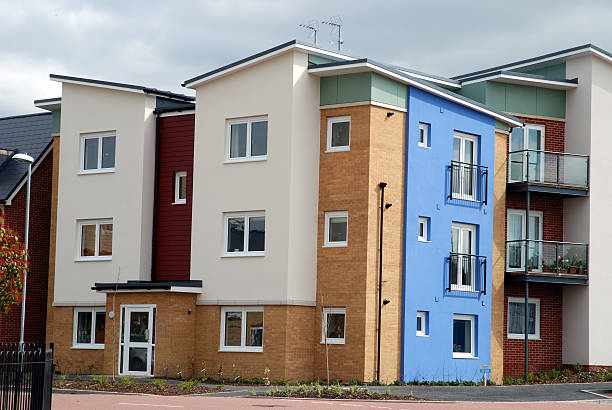
SB 9 Made Lot Splits Possible on Standard Single-Family Parcels
Before SB 9, homeowners could not split most single-family lots without a complex discretionary process. Many applications required hearings or strict zoning checks. SB 9 simplified this.
Now, many homeowners can request an Urban Lot Split with a streamlined review. This lets them divide one lot into two legal parcels. Each new parcel can then support more units.
Key things SB 9 allows for lot splits:
A single-family lot can be split into two parcels
Each parcel can have up to two units
Cities must approve qualifying applications through ministerial review
No public hearings or environmental review
Reduced parking requirements in many cases
This one change helped increase small infill development in older Los Angeles neighborhoods.
Homeowners Can Build Up to Four Units Through SB 9
SB 9 does not allow fourplexes by default. However, the combination of lot splits and duplex rules can create four homes on what used to be one lot. This is why the law is popular among small developers, individual homeowners, and families.
Here’s how the unit count works:
Without splitting the lot:
You may build two units (a duplex).With a lot split:
You may build two units on each new parcel, which results in four units total.
This works well for corner lots, deep lots, and older parcels with wide street frontage.
Common SB 9 build types in Los Angeles:
Duplex with shared driveway
Two small homes placed side-by-side
Front house + rear house layouts
Two detached units after a lot split
Mirror-design duplexes for cost savings
The flexibility makes SB 9 a strong option for homeowners looking to add long-term value.
Ministerial Approval Removed Major Delays and Subjective Review
One of the most important parts of SB 9 is the switch to ministerial review. This removed much of the uncertainty that homeowners faced with traditional discretionary permits.
Under ministerial review, cities must approve a qualifying SB 9 project if it meets objective standards. Officials cannot deny a project based on personal judgment or neighborhood pressure.
This change helped reduce:
Long review cycles
Public hearing delays
Inconsistent zoning interpretations
Back-and-forth corrections
Political influence on small projects
SB 9 created a more predictable path for applicants. This also helped reduce plan check fees and redesign costs.
Key Requirements Homeowners Must Meet Under SB 9
While the law opened many doors, it also includes important restrictions. These rules keep projects small and prevent large-scale redevelopment on single-family lots.
Main SB 9 requirements include:
The property must be in a residential zone
The owner must agree to live in one unit for three years for lot split projects
The parcel cannot be in a high-risk fire zone without mitigation
The home cannot be a historic landmark
Setbacks are reduced but still required (usually 4 feet)
The existing home cannot be removed if it was tenant-occupied recently
Most homeowners find these rules manageable, especially with proper planning.
SB 9 Benefits for Los Angeles Homeowners
The law created several advantages for people who want more flexibility from their land.
Top benefits include:
Faster permits due to ministerial review
More housing options on one lot
Potential for rental income
Higher property value
Flexible designs for multi-generational living
Lower construction risk compared to larger developments
These benefits are a major reason SB 9 is now one of the most important housing tools available in Los Angeles.
Opportunities for Homeowners, Investors, and Contractors in Los Angeles
SB 9 and ADU laws are not just about rules—they create real opportunities. Homeowners, small investors, and contractors can all benefit when they plan carefully. Understanding which path works best makes a difference in costs, timelines, and overall success.
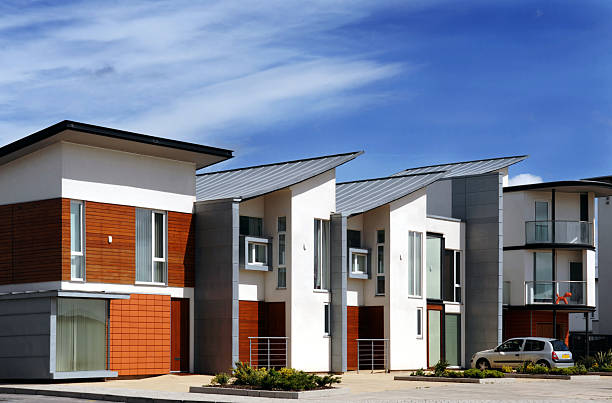
Low-Hanging Fruit: ADUs for Rental Income and Family Housing
ADUs are the simplest way to add living space or rental income. Many homeowners in Los Angeles are taking advantage of this.
Common uses for ADUs:
Housing for adult children or aging parents
Rental units for steady income
Home office or studio space
Short-term rentals (in limited situations, per city rules)
ADUs are typically smaller and faster to build than duplexes or lot-split homes. They also tend to cost less upfront. This makes them the most accessible option for many property owners.
SB 9 as a Strategic Tool for Infill and Lot Monetization
SB 9 offers strategic value for homeowners with larger lots or properties in prime neighborhoods. While more complex than ADUs, it can be used for long-term investment and urban infill development.
Key SB 9 opportunities:
Corner or deep lots: Build duplexes or four units for rental income.
Lot splits: Sell one parcel and keep another, gaining cash while retaining property.
Small-scale developers: Use SB 9 to increase density without major zoning changes.
Multi-generational households: Build multiple units to house family members on one site.
For many, SB 9 is a tool for increasing housing supply while also improving property value.
Services That Help: How Professionals Make SB 9 and ADU Projects Easier
Even though the laws simplify approvals, most homeowners benefit from expert guidance. Consultants, architects, and contractors experienced with SB 9 and ADU rules save time and reduce errors.
Professional services that add value:
Permitting guidance and document preparation
Feasibility studies and site analysis
Architectural and engineering plans
Project management and construction oversight
Coordination with city planning and building departments
Working with knowledgeable professionals helps projects move smoothly from concept to completion.
Summary: Why These Opportunities Matter
Together, ADUs and SB 9 offer options for both small and larger-scale projects:
ADUs: quick, lower-cost, family-friendly, and rental-ready
SB 9: strategic, higher-value, suited for larger lots or investors
Professionals: reduce mistakes, save time, and improve permit success
Los Angeles residents now have more paths to add homes, income, and value without waiting for long discretionary reviews or complex zoning changes.
Case Studies and Short Examples
Seeing real-world examples helps homeowners and investors understand how SB 9 and ADU rules work in practice. Below are three practical scenarios from Los Angeles. They highlight timelines, costs, and lessons learned.
Case 1: Detached ADU With Fast Ministerial Approval
Project Overview:
Homeowner wanted a small rental unit in the backyard.
Lot was standard single-family zoning, no overlays.
Goal: quick approval and modest budget.
Timeline & Steps:
Pre-application feasibility review (1 week)
Site plan and architectural drawings prepared (3 weeks)
Submitted to LADBS for ministerial review (4 weeks)
Minor corrections returned and addressed (2 weeks)
Building permit issued; construction started (6 weeks)
Final inspections and Certificate of Occupancy (3 weeks)
Outcome:
Total time: ~19 weeks
Cost: Moderate (garage conversion cheaper than new build)
Lesson: ADUs are fast, predictable, and low-risk when the site qualifies.
Case 2: SB 9 Lot Split Plus Duplex Build
Project Overview:
Corner lot, large enough for a lot split.
Goal: create two parcels, each with a duplex (4 units total).
Timeline & Steps:
Preliminary feasibility check (2 weeks)
Surveyor mapped the lot and prepared parcel map (4 weeks)
SB 9 application submitted with recorded covenant (3 weeks)
Plan check for duplexes on each parcel (6 weeks)
Minor corrections and utility coordination (4 weeks)
Building permits issued; construction began (12 weeks)
Inspections and final occupancy (6 weeks)
Outcome:
Total time: ~37 weeks
Cost: High (surveying, recorded documents, construction of duplexes)
Lesson: SB 9 projects can be profitable but need planning, capital, and professional guidance.
Case 3: When Local Rules Block an SB 9 Strategy
Project Overview:
Homeowner wanted a lot split in a historic overlay district.
SB 9 rules allow many parcels to split, but local protections applied.
Scenario & Solution:
Zoning prevented lot split; duplex construction also limited.
Owner consulted a permitting professional.
Alternative chosen: built a detached ADU in the backyard instead.
Outcome:
Project completed on time with lower cost.
Owner still gained additional living space and rental potential.
Lesson: Local overlays and restrictions can block SB 9 plans; ADUs are often the fallback solution.
Key Takeaways from These Case Studies
ADUs: faster approvals, smaller budgets, predictable results.
SB 9: larger potential, more units, requires planning, surveying, and higher costs.
Local rules, overlays, and zoning can still limit options.
Consulting experts saves time, money, and frustration.
These examples highlight why planning and professional guidance are essential in Los Angeles. Even with simplified laws, every lot has unique challenges.
Conclusion & Next Steps
SB 9 and ADU laws have reshaped residential permitting in Los Angeles. They offer homeowners and investors clear paths to add units, generate rental income, and increase property value. ADUs provide a faster, lower-cost option, while SB 9 opens the door for larger projects and long-term investment.
Understanding the rules, local standards, and practical challenges is key to success. Many homeowners find it helpful to work with experienced professionals who know Los Angeles permitting inside and out.
Thinking about adding an ADU or pursuing an SB 9 lot split or duplex on your property in Los Angeles? JDJ Consulting can guide you through the entire permitting process, from feasibility checks to plan submission and compliance with city rules. Call us at (818) 793-5058, email sales@jdj-consulting.com, or schedule your free consultation here. Visit us at 12925 Riverside Dr Suite 302, Sherman Oaks, CA 91423 to start planning your project today.
References
Los Angeles City Planning — “Senate Bill 9” project review page — https://planning.lacity.gov/project-review/senate-bill-9
HCD — “Accessory Dwelling Units (ADUs)” page — https://www.hcd.ca.gov/policy-and-research/accessory-dwelling-units
Los Angeles County Department of Regional Planning — “Planning Permits – SB 9” page — https://planning.lacounty.gov/planning-permits/sb-9/
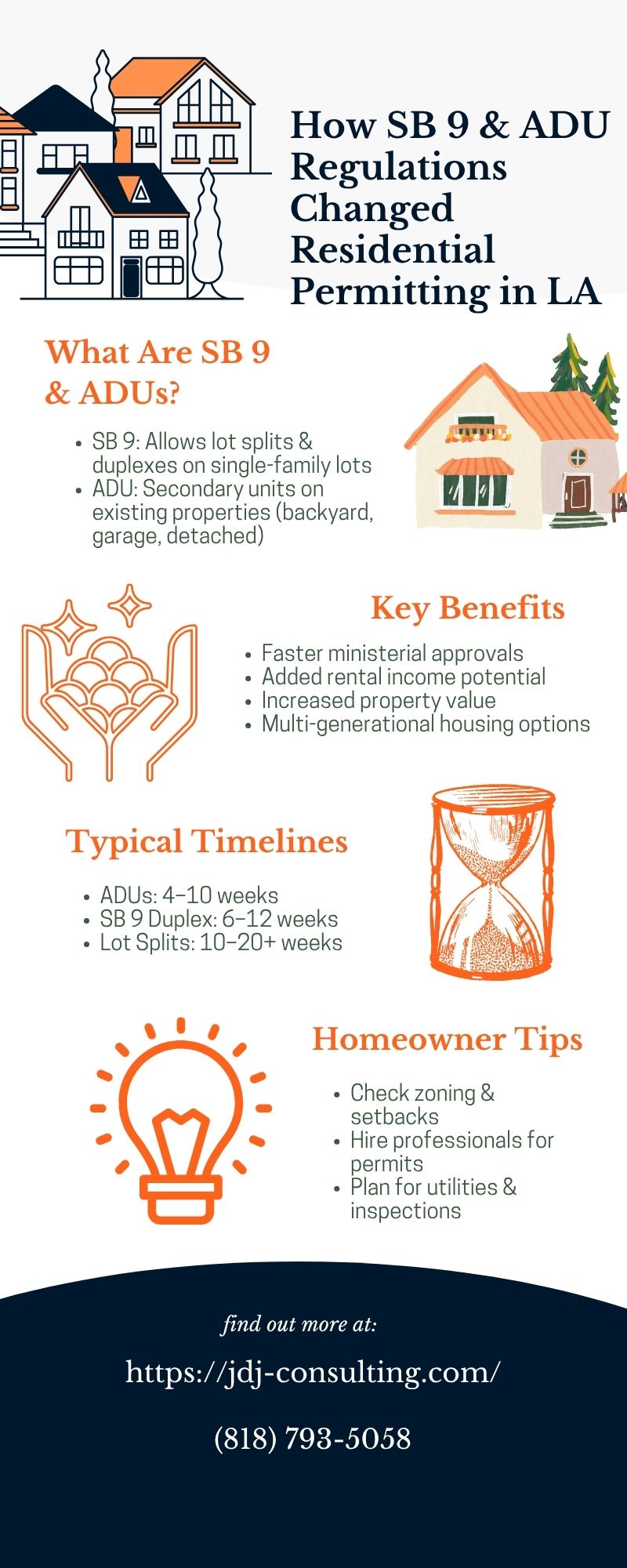
FAQs: SB 9 and ADU Regulations Changed Residential Permitting in LA
1. What is SB 9 and how does it impact Los Angeles homeowners?
SB 9 is a California state law allowing homeowners to split single-family lots and build duplexes. In Los Angeles, it enables property owners to:
Split a lot into two parcels
Build up to two units on each parcel
Avoid discretionary approvals if the project meets city rules
This law makes it easier to add housing, increase property value, and generate rental income without undergoing lengthy approval processes.
2. What is an ADU and why are they important?
An ADU (Accessory Dwelling Unit) is a secondary housing unit on a single-family lot. In LA, ADUs are valuable because:
They provide rental income or housing for family members
Permit processes are simpler than large additions
They do not require major zoning changes
They increase property value and flexibility for homeowners
3. How do ADUs differ from SB 9 duplexes?
ADUs are typically smaller units added to an existing lot, often in a garage or backyard. SB 9 duplexes allow:
Lot splits for two new parcels
Two units per parcel (up to four total)
Ministerial approval for qualifying projects
ADUs are faster and lower-cost, while SB 9 projects require more planning and investment but offer greater long-term value.
4. What are the eligibility requirements for SB 9?
To qualify for SB 9 in Los Angeles:
The property must be in a residential zone
Owner-occupancy is required for one unit for three years
No historic or environmentally sensitive restrictions
Compliance with setbacks, height limits, and lot coverage
Properties meeting these criteria can undergo ministerial approval for lot splits or duplex construction.
5. How long does the permitting process take for ADUs?
Typical ADU permitting timelines in Los Angeles:
Garage conversions: 3–8 weeks
Detached ADUs: 4–10 weeks
Steps include feasibility review, plan preparation, submission, and minor corrections
Ministerial review ensures faster approval compared to discretionary permits.
6. How long does SB 9 approval take?
SB 9 projects are more complex:
Duplex plans: 6–12 weeks
Lot splits with duplexes: 10–20+ weeks
Time depends on:Site feasibility
Surveyor and legal document preparation
City review cycles
Utility coordination and corrections
7. Can homeowners build both an ADU and an SB 9 duplex on the same lot?
Yes, but it depends on lot size and zoning. Many homeowners use:
An ADU for rental or family housing
An SB 9 duplex on a newly split parcel
Each project must meet setbacks, height, and local compliance requirements. Consulting a professional ensures legal and practical feasibility.
8. What are the financial benefits of ADUs?
ADUs can:
Generate monthly rental income ($1,500–$2,500 on average in LA)
Increase property value by 10–15%
Offer flexible use for family members or home offices
They are generally lower-cost than SB 9 projects and provide faster returns.
9. What are the financial benefits of SB 9 duplexes or lot splits?
SB 9 projects offer higher potential returns:
Can create up to four units on a single lot
Rental income can range from $4,000–$12,000 per month
Long-term property value increases with additional legal units
Ideal for investors or homeowners seeking multi-unit projects
10. Are there legal restrictions homeowners must follow under SB 9?
Yes. Key requirements include:
Owner-occupancy for one unit
Recorded covenants and easements
No historic or fire-risk violations
Compliance with setbacks, height, and parking
Failure to meet these requirements can block approval or future resale.
11. Can SB 9 and ADUs be used to house family members?
Yes. Many homeowners use:
ADUs for parents, adult children, or caregivers
Duplex units from SB 9 for multi-generational living
Both options provide legal, safe, and city-approved housing solutions without affecting neighborhood character.
12. What are the common barriers to SB 9 projects?
Challenges include:
Financing complexity and higher upfront costs
Lot limitations or slope issues
Surveyor and legal document requirements
Utility upgrades or easements
Longer construction timelines compared to ADUs
13. What are the common barriers to ADUs?
While easier than SB 9, ADUs face:
Utility connection costs
Setback and zoning limitations
Fire-safety or hillside restrictions
Construction labor shortages
HOA or neighborhood design restrictions
14. Do homeowners need professional help for SB 9 or ADU projects?
Yes. Professionals help with:
Feasibility and site review
Plan preparation and city submissions
Permit navigation and compliance
Project management and inspections
Working with experts reduces delays, cost overruns, and legal risks.
15. How does SB 9 affect property resale value?
SB 9 projects can significantly increase resale value by:
Adding multiple legal units
Offering rental income potential
Attracting investors or multi-family buyers
Well-permitted projects maintain legal value; unpermitted units may reduce sale price.
16. How do ADUs affect property resale value?
ADUs can boost resale value by:
Offering additional living space
Providing legal rental units for income
Appealing to buyers seeking flexible housing
Properties with fully permitted ADUs are more attractive in high-demand neighborhoods.
17. What types of parcels are best for SB 9 projects?
Ideal parcels include:
Corner lots or deep lots
Single-family lots with wide frontage
Sites without historic, fire, or environmental restrictions
These lots maximize unit potential and ease compliance with setbacks and parking.
18. How does ministerial review work for SB 9 and ADUs?
Ministerial review means the city:
Approves qualifying projects based on written rules only
Cannot deny projects for subjective reasons
Provides faster, predictable timelines
Reduces discretionary delays common in traditional permits
19. Can ADUs be used as short-term rentals?
Rules vary by city:
Some areas allow short-term rentals with registration
Many ADUs are restricted to long-term leases
Owners must follow LA city and HOA rules to avoid penalties
Proper legal guidance is recommended before using an ADU as a rental.
20. Where can homeowners get expert guidance for SB 9 and ADU projects?
Homeowners in Los Angeles can consult firms like JDJ Consulting for:
Feasibility and planning
Permit applications and compliance
Project management from start to finish
Expert advice on cost, design, and city rules
Professional help ensures projects are completed legally, efficiently, and profitably.



